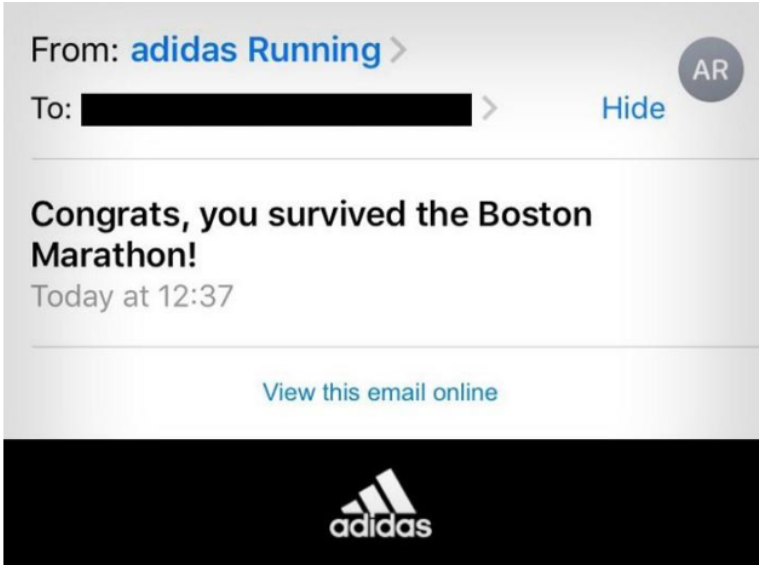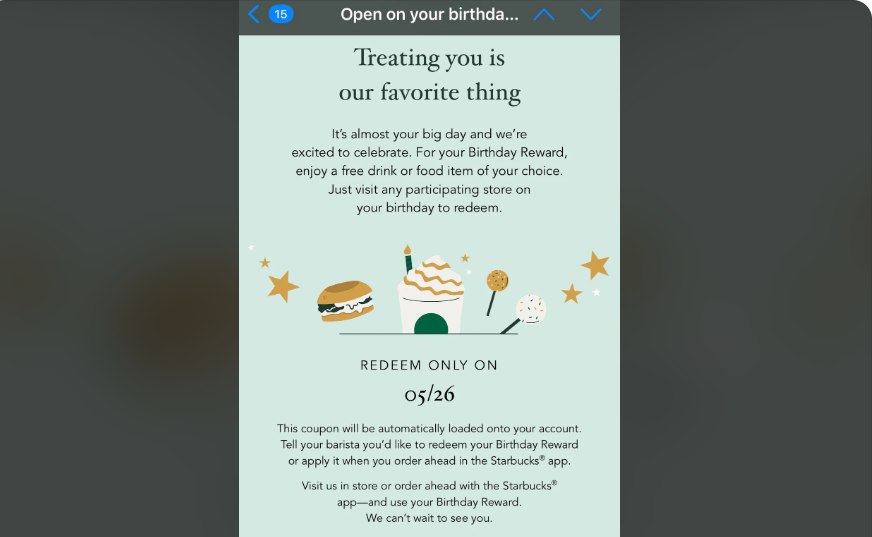This blog post explores cases where famous brands made mistakes in their email marketing campaigns, but managed to turn the difficult situation around.
Based on real case studies from Amazon, Adidas, Pinterest, The New York Times, and others, we have drawn key takeaways that will help you avoid costly errors and establish a strategy for effective damage control.
Table of Contents
- Automation and Segmentation Errors
- Ignoring Context
- Technical Glitches and Errors
- Conclusions and Tips: Damage Control Strategy
Automation and Segmentation Errors
These stories demonstrate how “smart” algorithms lacking human logic can lead to awkward and even painful situations.
Pinterest’s Irrelevant Wedding Congratulation
Pinterest mistakenly sent a wedding congratulation email («Congratulations on your wedding!») to many unmarried and single women. The users’ interest in wedding-related content was incorrectly interpreted as an intention to marry.

The company promptly apologized with an email that humorously admitted the blunder:
«We’re sorry we came off like an overbearing mother who is always asking when you’ll find a nice boy or girl,» said Barry Schnitt, Pinterest’s Head of Communications and Public Policy, in an email to Business Insider.
Advice: Review your automation algorithms to avoid personalization errors.
Shutterfly’s Mistaken «New Baby» Congratulation
The photo service Shutterfly mistakenly sent an email congratulating all its subscribers on a newborn baby. Even those without children received the mailing. Worse, the email proved painful for those who had experienced miscarriages or struggled with infertility.
Advice: Carefully check the segmentation of your email recipients before sending. Use double verification for important life events (e.g., purchase history and confirmed status).
Shutterfly quickly reacted and apologized to users, including via personal messages.
Amazon’s Baby Registry Email Sent to «Non-Parents»
On September 19, 2017, Amazon launched an email campaign that was intended to be a model of triggered marketing but turned into a serious offense for many. The email was addressed to users who had supposedly created a Baby Registry—a list of desired gifts for a newborn.
What the email stated and why it went viral:
«Hello Amazon Customer, Someone great recently purchased a gift from your baby registry!» The email then featured an image of a crawling baby, an invitation to check the «Thank You» list, and a cute note: «P.S. Remember, some gift-givers like to keep it a surprise. Have a great day! Your Amazon Baby Registry Team.»
The problem was that the email was sent to millions of users who had neither a registry nor children. The reaction was instant and extremely negative. Users widely expressed their confusion. But the most severe damage was inflicted on subscribers who perceived the email as a personal insult. As one user wrote: «Don’t send infertile women who’ve miscarried notices for gifts for a baby registry they don’t have.»
That same evening, an Amazon spokesperson apologized for a «technical glitch» that led to the «accidental sending» of the notification.
Advice: Always perform a data check before using triggered or personalized mailings. It is better to send a general but relevant email than a personalized but mistaken one.
Automated data collection and triggered emails have significantly expanded the possibilities of email marketing, but they also carry risks. As the case studies show, without proper analysis and human logic, algorithms are blind to context and ethical norms. Incorrect personalization can lead to fatal consequences for brand reputation.
Ignoring Context
When marketers overlook the global or regional context in which their message arrives, the recipient reaction can be very negative.
Adidas and the Boston Marathon Survivors
The company sent an email to all Boston Marathon participants with the subject line: «Hi, you survived the Boston Marathon!»

Given the tragic events of 2013, when people were injured and killed during the Boston Marathon, this phrasing was not as amusing as the company’s marketers had intended. Adidas promptly apologized and later spent significant resources on reputation repair, creating personalized video highlights for every runner in subsequent years.
Advice: Be cautious with your wording and check emails for sensitive topics and inappropriate phrases.
Airbnb’s Ill-Timed Design Email
In August 2017, Airbnb sent an email themed around living in floating homes during the peak of Hurricane Harvey, when homes in Houston were literally “floating.” The email featured an image of a floating house and suggested taking a break: «Stay above water» and «live the life aquatic with these floating homes». Brand representatives apologized and admitted they had chosen an unfortunate moment for that advertisement.
Advice: Always check if the email corresponds to the current situation and will not provoke negative reactions from your audience.
Technical Glitches and Errors
Errors in email campaigns can occur due to system failures, oversight, or incorrect platform settings.
The New York Times Subscription Cancellation Email
The New York Times accidentally sent an email about subscription cancellation and an offer for a 16-month home delivery subscription at a 50% discount to over 8 million readers instead of the intended 300 users.
Subscribers immediately began to worry and contacted technical support. The publication promptly apologized and explained that the message was the result of an error. The apology was followed up with discounts to mitigate the panic.
Advice: Carefully check the recipients before sending and in the context of triggered campaigns.
Starbucks: Trigger Errors and the Lost Gift
Starbucks sent a congratulatory email to loyalty program members with a free birthday drink. Due to a technical error or a flaw in the trigger logic, the email specified an incorrect activation date for the gift. For example, a subscriber with a birthday on May 25 received an email instruction: «Your reward is active only on May 26.» However, in the application, the reward was usually activated only on the actual date (May 25) or not at all.
This error caused mass confusion: customers came to the coffee shop on the date specified in the email (e.g., May 26) but found that the reward had already disappeared or was not activated.

Instead of a public apology, Starbucks focused on individual problem resolution. Baristas prepared the birthday drink upon presentation of ID, and customer support promptly activated missed bonuses to compensate for the inconvenience.
Advice: Any dynamic data related to dates and activation conditions (especially in triggered emails) must be valid.
Conclusions and Tips: Damage Control Strategy
Upon discovering errors in an already sent email campaign, these tips will help minimize damage, maintain trust, and even boost audience loyalty.
General Damage Control Rules:
- Assess the Damage: A public reaction is necessary only in case of an ethical/contextual violation, financial damage (wrong price, non-working promo code), or a mass segmentation failure. Minor typos and errors are best fixed silently.
- Act Fast: If a response is required, act immediately upon discovering the error to get ahead of social media negativity.
- Be Honest: The apology email should be brief, honest, and free of excuses. Go straight to the point: Acknowledge → Explain → Resolve → Compensate.
- Compensate: Always offer a benefit slightly exceeding the damage (e.g., an extra discount, free content). This turns negativity into an opportunity to strengthen loyalty.
- Tone and Signature: Use a respectful tone and sign off from a real employee or manager. This helps show personal concern and humanity, and restore trust.
The stories of famous brands prove that no one is immune to errors. The essence of professional email marketing is not in absolute flawlessness, but in a strategy for damage control. Prompt reaction, honest apologies, and compensation will help turn a negative situation to your advantage, transforming a disappointed customer into a loyal one.